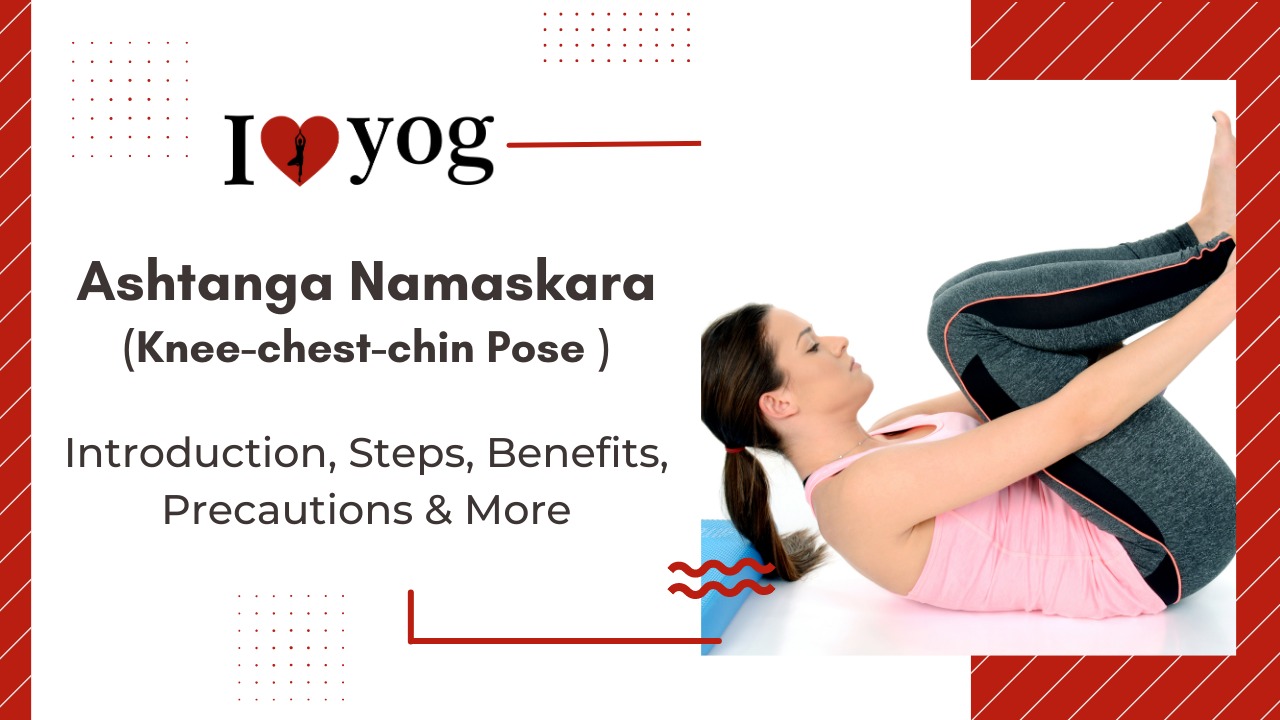What You Should Know Prior to Performing Knee-Chest-Chin Asana?
The pose should be performed on an empty stomach in the morning.
Even if practised in the evening or at any other time of day, the stomach, bladder, and bowel should be empty.
If it is practised at any other time of day outside the early morning, the practitioner should consume food 4 to 6 hours prior to practice. This will ensure that the stomach is empty by the time he or she assumes the posture, and the food’s energy will make the pose easier to perform.
- Yogasana Level – Beginner
- Yogasana Style – Strengt
- Yogasana Repetitions –
- Yogasana Strengthens –
- Yogasana Stretches –
Effect of Knee – Chest – Chin on Tri dosha
It balances samana vata and pachaka pitta due to the pose’s activation of the Manipura Chakra and improvement of digestive functions. The pose also stretches the chest and is beneficial for the chest organs. Hence, it is beneficial for udana vata and avalambaka kapha. This asana relaxes the mind, thereby balancing Prana Vata, Sadhaka Pitta, and Tarpaka Kapha.
How to Perform the Knee-Chest-Chin Yoga Pose/Asana
- Begin by maintaining the Plank position. Your palms are well-extended and firmly planted. Your toes should be planted firmly on the ground, and your heels should be separated. Exhale and lower your knees, chest, and shoulders to the ground.
- Engage your core muscles as you descend to gain the posture gradually.
- Your elbows should be in proximity to your ribs. Shoulders should be positioned between the palms and rolled forward to allow the chest to expand.
- From this position, rise your hips and contract your abdominal and mid-torso so that either your chin or forehead touches the floor.
- Ensure that your stomach is pulled in and that your entire back has a small arch. Your body should be balanced on both toes, both knees, both hands, and either your chin or your forehead.
- Remain in this position and breathe slowly for a few minutes or as desired. Then, inhale and raise your chin, chest, shoulders, abdomen, and knees slowly into the Plank position.
What are the benefits of the knee-chest-chin yoga posture/asana?
- Knees-Chest-Chin promotes spine and neck flexibility while expanding the chest.
- Additionally, it assists in strengthening the arms, shoulders, legs, abdomen, and back.
- Regular practice of the position can assist build strength across the entire body and prepare you for other arm-balancing and weight-bearing poses.
What Are The Contraindications And Precautions For Knee-Chest-Chin Asana?
- Pregnancy,
- carpal tunnel syndrome,
- Injury to the neck, shoulder, elbow, or wrist.
- Elevated blood pressure
- Individuals recovering from surgery
- Migraine
What Is the Science Behind the Knee-Chest-Chin Posture/Asana?
Ear Pressure Pose is a wonderful forward bend pose that relaxes the mind, allowing you to turn inwardly and tune both your mind and body away from the hectic existence. Although a tough pose, Ear Pressure Pose gives considerable relaxation when done mindfully and held longer. It is a therapeutic approach to relieve tensions and blocked channels from the deeper tissues, such as fascia in the lower back and neck, as part of yin yoga.
Tips For Beginning Knee-Chest-Chin Posture/Asana?
- Beginners with a basic body structure can begin Ashtanga Namaskara with Cat posture, which requires less effort than Chaturanga Dandasana to prevent injury.
- Practitioners with rigid shoulders may have difficulty opening the chest. Therefore, one should not roll their shoulders beyond their own.
- To have a perfect or praiseworthy arch in the entire back would require a degree of flexibility that a newly enrolled practitioner would not have. By lowering the space between the pelvis and the floor, it is possible to practice Ashtanga Namaskara. In the event that one touches the floor with the chin or forehead, the neck must be bowed. Beginners with limited neck flexibility might therefore attempt to touch the floor without exerting any power.
Advanced Changes in Pose
As with the majority of yoga postures, there are strategies to make this position more approachable to beginners or to deepen it as your practice develops.
Need an Alteration?
As you perform this pose, you will develop arm and core strength. Try to resist the temptation to bypass this pose in favor of the more difficult Chaturanga. Over time, if you perform Chaturanga before you are prepared, you may sustain severe shoulder injuries.
Willing to Accept a Challenge?
The pose will become more intense as you arch your back further. However, avoid arching your back to the point of experiencing back pain.
Include this pose in your first few vinyasas to warm up if you feel comfortable in it.
Related Yoga Poses/Asanas –
- Low plank pose
- Forward-facing dog position
- High lunge stance
- Plank posture
Reference:-
https://www.verywellfit.com/knees-chest-and-chin-ashtanga-namaskara-3567092


